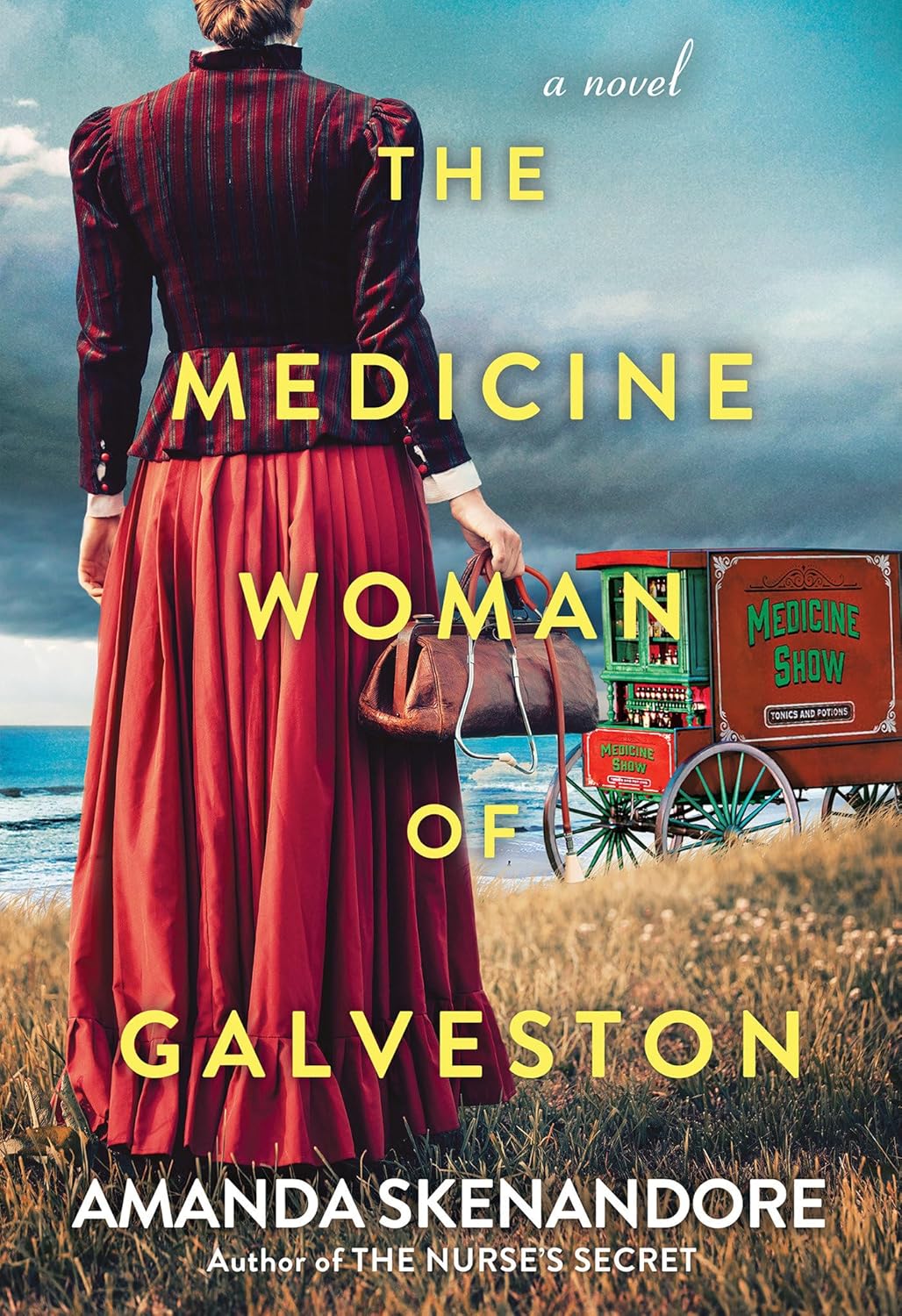As an avid fan of historical fiction with rich narratives and strong female protagonists, I eagerly picked up The Medicine Woman of Galveston by Amanda Skenandore. The premise—a former doctor and her disabled son joining a traveling medicine show amid the backdrop of the devastating Galveston Hurricane of 1900—intrigued me. I was curious to see how the author would tackle themes of resilience, motherhood, and the challenges faced by women in a male-dominated field.
The protagonist, Dr. Tucia Hatherley, is a compelling and relatable character who embodies strength and vulnerability. After a traumatic experience led her to leave the operating room, she finds herself in a corset factory—an oppressive environment that feels worlds away from her medical aspirations. The story kicks off when Tucia joins a charismatic showman named Huey, and the narrative brilliantly captures the sense of desperation and determination that drives her choices. I found her journey of self-rediscovery alongside her son Toby—who has Down syndrome—poignant and beautifully rendered.
One aspect that particularly stood out to me was the depth of the character development. Readers have expressed similar sentiments in their reviews, noting Tucia’s resilience and the complexity of her relationships with the other quirky members of the medicine show. Reviewer Engtchr sums it up perfectly: "I had trouble putting this book down, and I shall miss the characters." This sentiment resonates with me; I, too, felt an attachment to the cast of misfits that Tucia learns to trust in her darkest moments.
As the story progresses, readers are drawn deeper into the perilous situation when the show travels to Galveston. The impending hurricane serves as both a literal and metaphorical storm—testament to the challenges Tucia must confront, not only regarding her beliefs in medicine but also in humanity itself. The vivid descriptions of the approaching storm are both heart-wrenching and captivating. JayNikki’s review highlights the hurricane’s role in bringing an intense urgency to the narrative, providing layers that deepened my emotional investment.
However, I do have to note a couple of drawbacks. The title suggests a stronger focus on Galveston itself, but Tucia’s arrival there comes late in the story, which may disappoint readers anticipating more direct involvement in the events of the hurricane. Additionally, some characters felt somewhat predictable, and certain plot points had an air of familiarity. Christine Boos points out that the story’s characters lacked depth for her; while I didn’t feel quite the same, I understood her frustration.
The book’s strength lies in its rich historical context, particularly regarding the challenges women faced in medicine during the early 1900s. It thoughtfully explores gender inequality, as well as the societal expectations placed upon women. Paula S. Paloger’s review echoes this sentiment, praising Skenandore for delving into the dichotomy of ambition versus societal expectation.
In conclusion, The Medicine Woman of Galveston is a beautifully written, emotional tribute to resilience and the complexity of human relationships. It’s a story about survival—not just against natural disasters, but also against the tide of societal norms that seek to undermine female ambition. While there were aspects that could be improved in terms of pacing and character complexity, the overall narrative is engaging and well-crafted. I happily recommend this book to anyone who loves a good tale of perseverance set against a historically rich backdrop.
Rating: ★★★★½ (4.5/5)
Discover the captivating journey of healing and resilience in The Medicine Woman of Galveston. >>








